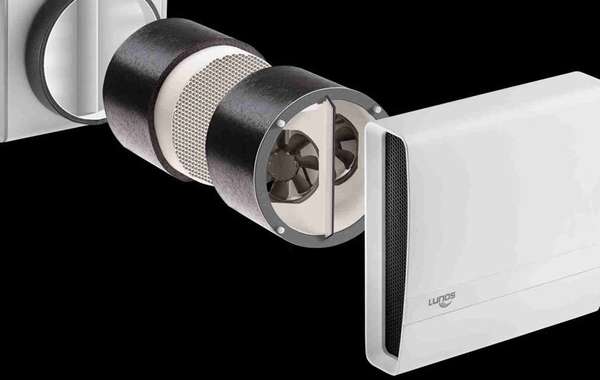Where should you locate HRV and ERV exhaust vents?
We are building a 816sq ft 2 bed 2 bath home, new build, relatively tight (not passive) with 2" Roxul exterior insulation and 5.5" sheeps wool insulation in the walls and 9.5" sheeps wool insulation in the vaulted ceiling. ICF slab foundation, no attic or crawlspace. Temperate climate (30C summer, -25C winter) with wood stove heat and no A/C. We have therefore decided on a ERV (Lifebreath Metro 120) for good air quality and to maintain somewhat stable humidity.
1. We will have an exhaust vent in both bathrooms from the ERV, and fresh air vents into the bedrooms and main living space. Living space and kitchen is open concept and only 320sq ft. If we run an exhaust vent from the kitchen area as well as the two bathrooms, we will not have the minimum CFM to exhaust the bathrooms according to our district, which is 50CFM each. We will have a dedicated hood exhaust and make up air supply for the kitchen. Do you think this will be sufficient, or do we need to look at a larger ERV and add in a kitchen exhaust for the ERV? We arent even finishing the second bathroom and likley never will unless we sell the house, so upsizing the ERV seems completely unneccesary when you look at how we actually intend to live in the house. Also adding a kitchen exhaust to ERV adds another bulk head to our small house so I would rather not.
2. Make up air for the kitchen exhaust....wowza. It seems that this is required but very little is written into our building code here to suggest best practices. I have decided we will do our best to bring fresh air in directly around the stove to vent directly into the exhaust. I would love to hear your best damper solutions, so far I am leaning towards the BROAN 6" make up air damper (min exhaust requirement for our district is 100CFM so I will go with a small range hoood). We cannot pre-heat the make up air because we are on solar, no electric heat so I believe my best bet is to get the air in and out of the house as efficiently as possible without it circulating with the conditioned air in the house.
Would love to hear your opinons on these matters! Just a note that there will also be "make up air" for the wood stove as required by code here.





























We can give you general advice, but you may need an actual ventilation pro, if so you may be able to find a green home HVAC designer in the Ecohome Building Directory. Just enter the category and location where you are. That said, we can still weigh in a little –
Having your HRV or ERV exhaust vents draw from bathrooms eliminates the need for makeup air as you obviously know. Not everyone gets that, so kudos to you :)
If you have (and use) your stove hood, that should take care of kitchen source moisture and smells. An additional exhaust vent near the kitchen is great if you don’t use the hood all the time, and for moisture from the sink, but more important is the stove hood. So if its causing you to redesign the system for the worse, I’d be okay omitting it, but again I would defer to your local code. As for choosing a specific unit, that's also something I would suggest you discuss with an HVAC designer, we really aren't able to comment specifically. For a bit more general information, here is our home ventilation design video guide page that may offer some insight.
For ‘makeup air’ for a woodstove, have you thought of having a direct cold air feed to the stove? If air is supplied directly to the back input of the stove with outside air (a quality stove should allow this) then you won’t depressurize the home at all when you use the woodstove, so no need to bring cold air into the conditioned space. The wood stove is nothing but a big metal radiator at that point, and you don’t use interior air you already heated for the purpose of burning wood.
Thanks! I think due to the cumbersome redesign required (and upsizing the equipment) we will omit the kitchen exhaust and be diligent about using the hood exhaust when needed. The kitchen exhaust requirements are clear from our building permit so we will just run that as it's own system. They are fine with that!
we will likely do a direct to firebox fresh air inlet for the wood stove yes! That seems to be the best option so far.
That's all great to hear Micara. Sounds like a great build, check back if you have more questions along the way, and other readers may benefit from your experience so let us know how it goes!